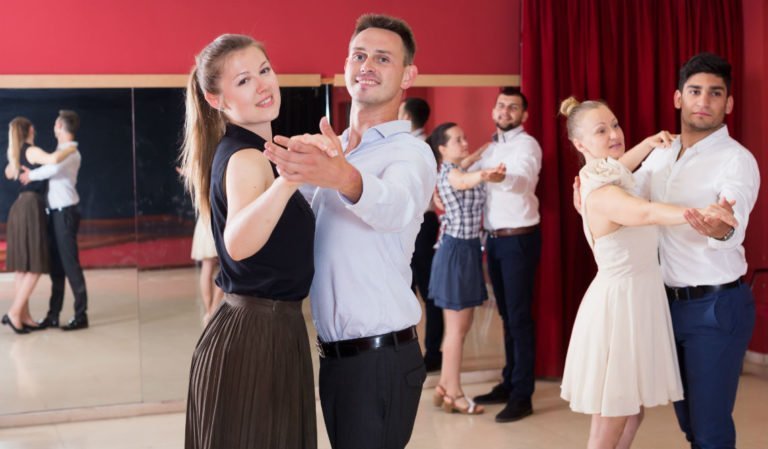What is Latin Jazz Dance?
Latin jazz dance is a form of dance that combines the rhythms and steps of Latin American dance styles with the movement and technique of jazz.
This fusion of Latin American and African-American dance styles originated in the 19th century. It combines salsa, Mambo, rumba, cha-cha-cha, merengue, and tango with jazz improvisation.
Latin jazz dance is fun, energetic, and expressive, making it a popular choice for social dancing.
Where did Latin Jazz Dance Come From?
The roots of Latin jazz dance can be traced back to the Mambo. The Mambo was born in the clubs and ballrooms of New York City in the 1940s and 50s.
It is a fusion of African, Caribbean, and American jazz music styles with Latin American rhythms like the Cha-cha-cha, Rumba, and Samba.
How is Latin Jazz Dance Different from Other Forms of Jazz Dance?
Jazz dance is a type of dance that incorporates elements of jazz music into the choreography.
Jazz music is known for its rhythms that are different from the regular beat and its ability to change on the spot. These same qualities are often found in jazz dances.
Jazz dancers often employ improvised movements. They may also change their choreography on the fly in response to the music.
Sticks, umbrellas, fans, and hats are popular props among dancers.
Latin jazz dance is a fusion of Latin American and African dance rhythms with jazz.
The danced rhythms are typically Mambo, cha-cha-cha, rumba, salsa, and Afro-Cuban.
The movements are often rooted in the popular dances of Cuba and Brazil, such as the samba and bolero.
What are Some of the Basic Moves in Latin Jazz Dance?
Here’s an example of a beginner-level Latin Jazz dance routine choreographed by Fiona Su and based on Bachata, Flamenco, Ballroom Latin, and Jazz music.
Who can Learn Latin Jazz Dance and Where can They Do so?
Anyone can learn Latin jazz dance. Many dance schools around the world offer classes in this style of dance.
Why Should People Learn Latin Jazz Dance?
There are many reasons why people should learn Latin jazz dance. Some of the benefits include:
1) Improved cardiovascular health.
Latin jazz dancing is a great way to get your heart rate up and improve your overall cardiovascular health.
2) Improved balance and coordination.
Latin jazz dancing requires good balance and coordination, which can help improve overall stability and mobility.
3) Increased flexibility.
Latin jazz dancing helps stretch muscles and ligaments, increasing flexibility in the body.
4) Improved strength and stamina.
Latin jazz dancing is a great workout that can help improve strength and stamina over time.
Music
Latin Jazz
Jazz originated in the Mississippi Delta and has its roots in African-American rhythms and melodies. Along with Latin and African-Caribbean music, jazz has a long history of improvisation that follows the clave rhythm.
Latin American musicians migrated to New York City in the 1940s, 1950s, and 1960s, where they combined their music with jazz.
It became a big band style, and “Latin Jazz” was born as a combination of jazz structure and Latin rhythms.
In the 1940s, New York City witnessed the development of Latin Jazz through the collaboration of musicians and composers Mario Bauza, Israel “Cachao” Lopez, Dizzy Gillespie, and Chano Pozo.
Tito Puente and Perez Prado were the pioneers of Latin Jazz, also known as Mambo.
Spanish Tinge
The tresillo-habanera (which he dubbed the Spanish tinge) was considered an important component of jazz by Jelly Roll Morton.
The habanera rhythm may be heard in his left hand on “The Crave” (1910, recorded 1938) and other songs.
Antônio Carlos Jobim
The bossa nova songs of Antonio Carlos Jobim have been added to the repertoires of numerous established Latin jazz artists.
Latin jazz was primarily developed in the 1970s and onward when musicians sought to explore different national traditions and bridge musical boundaries.
Here’s a Story
When I was younger, my parents would take me to see Latin jazz dance performances. I was always excited to watch the dancers move and groove to the music. It’s such an amazing art form.
I never imagined that I would ever try Latin jazz dance myself. But one day, I saw a class advertised at the community center and decided to give it a try.
The first few classes were challenging. I had no idea how to move my body in time with the music. But with time and practice, I started to get the hang of it.
Now, I love going to class and dancing along with everyone else.
RESOURCES
We know how much you love to dance, which is why we’ve designed the Very Fine Dance Shoe just for you.
It’s got all the features you need – like cushioning and arch support – so you can dance longer without wearing out your feet.
Plus, it uses high-quality natural suede for traction and slides, and genuine leather on the inside to stretch and conform to your foot.
You won’t find a better dance shoe on the market today.
Pick up a pair of our Very Fine Dance Shoes today and see what dancing is really meant to feel like. You won’t regret it!
With its double sole, superior arch support, built-in Memory Foam cushioning, breathability, and blister prevention features, the Marcus is one of the most comfortable ballroom shoes on the market today.
The Marcus also comes with a High-Density EVA tech inserted between the heel and its sole to assist in softening impact from vigorous dance moves – ensuring that you can dance all night long in complete comfort.
Order your pair of Dante Latin Dance Shoes today!
Conclusion
There’s no better time to start learning Latin jazz dance than now. Its fun, energetic, and expressive qualities are popular for social dancing.
But don’t take our word for it – sign up for a dance class and learn firsthand! Happy Dancing!









